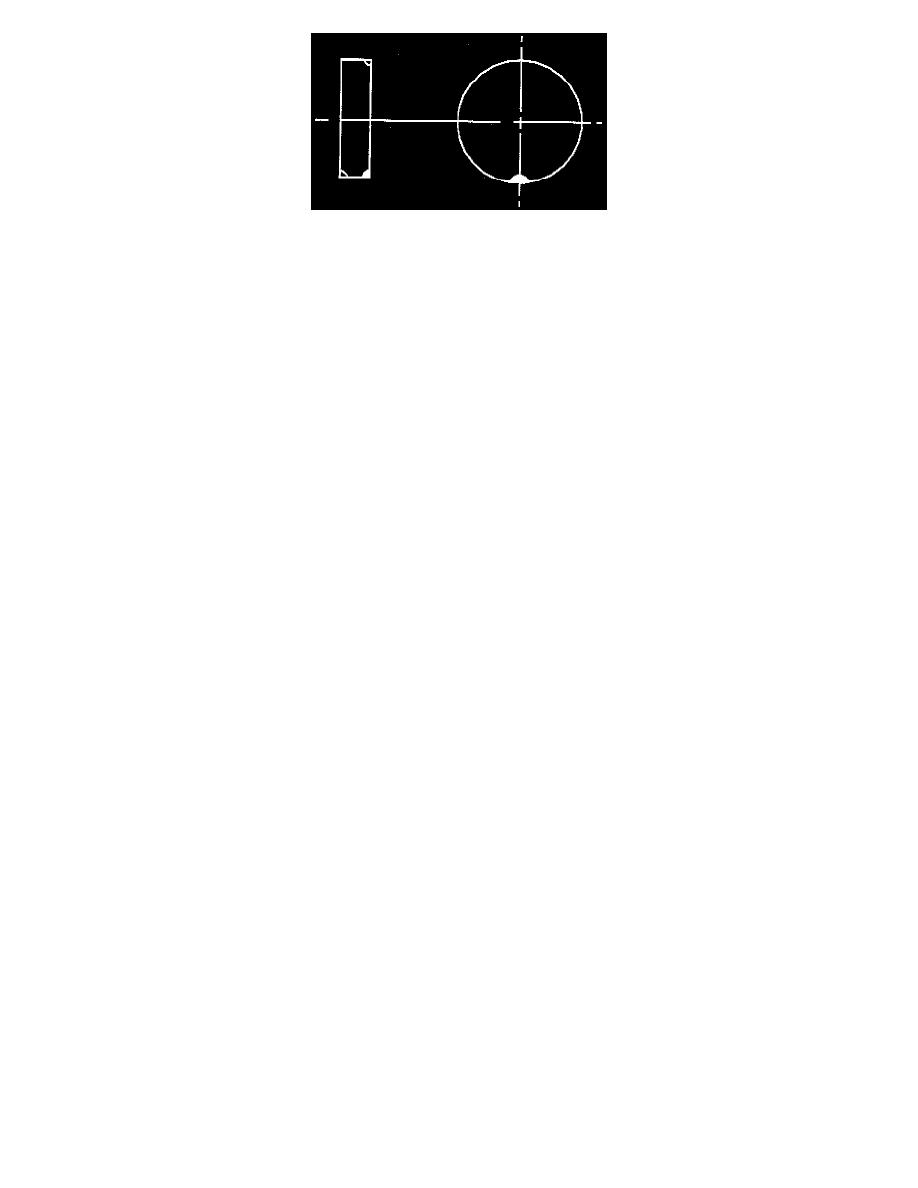S10/T10 P/U 2WD V6-4.3L VIN W (1997)

Dynamic balance is achieved by an equal distribution of tire/wheel weight (mass) around the plane of rotation. This equalizes the forces and allows the
wheel to rotate smoothly around the axis that bisects the tire and wheel centerline.
General Balance Precautions
Remove deposits of foreign material from the inside of the tire. Remove stones from the tread to avoid operator injury during spin balancing and to
obtain a good balance. Inspect the tire for any damage, then balanced according to the equipment manufacturer's recommendations.
Off-Vehicle Balancing
When balancing tire and wheel assemblies off the vehicle, use a balancer that pilots the wheel by the center hole (not the wheel bolt) if possible. Always
follow the equipment manufacturer's instructions.
Some electronic off-vehicle balancers are more accurate than the on-vehicle spin balancers, but do not correct for rotor unbalance. If the vibration is not
corrected by the off-vehicle balance, an on-vehicle balance may also be needed.
On-Vehicle Balancing
When needed, on-vehicle balancing will help correct vibrations due to brake drum, rotor, and wheel cover imbalance. When balancing on-vehicle,
remove the balance weights from the off-vehicle dynamic balance. If more than 28 grams (one ounce) of additional weight is required, it should be split
between the inner and outer rim flange.
CAUTION: On vehicles equipped with limited slip rear axles, do not attempt to balance a tire on a drive wheel with the other drive wheel on
the ground. The vehicle may drive through this wheel and cause the vehicle to move unexpectedly, resulting in personal injury and property
damage.
CAUTION: Do not spin the drive wheels faster than 55 km/h (35 mph) as indicated by the speedometer. This limit is necessary because the
speedometer indicates only one-half of the actual wheel speed when one drive wheel is spinning and the other drive wheel is stopped. Personal
injury and damage may result from high speed spinning.
NOTICE: The driven tire and wheel assemblies should be spun using the engine. Limit speed as stated in the following Caution.
To distinguish between standard rear axle and a limited slip rear axle, check for Positraction (G80) on the Service Parts identification label.
Wheel Balance Weights
If more than 28 grams (1 ounce) are needed when static balancing, the balance weights should be split as equally as possible between the inboard and
outboard flanges. Balancing of factory aluminum wheels requires the use of special polyester coated clip-on type balance weights. These weights are
designed to fit over the thicker rim flange of the aluminum wheel. They also provide a much better appearance and will not discolor, corrode, or damage
the wheel.
Important: When installing the polyester coated-weights, care must be used so the polyester coating-does not crack. It is recommended that a Teflon
coated hammer be used.
NOTICE: Do not scratch the clear coating on aluminum wheels with wheel weights, or wheel balancing tools.
Failure to follow proper procedures could cause the aluminum wheel to corrode and the clear coating to peel from the wheel.
